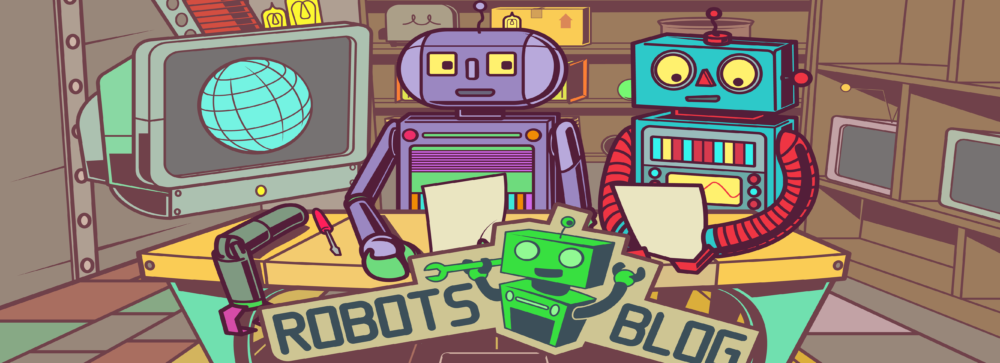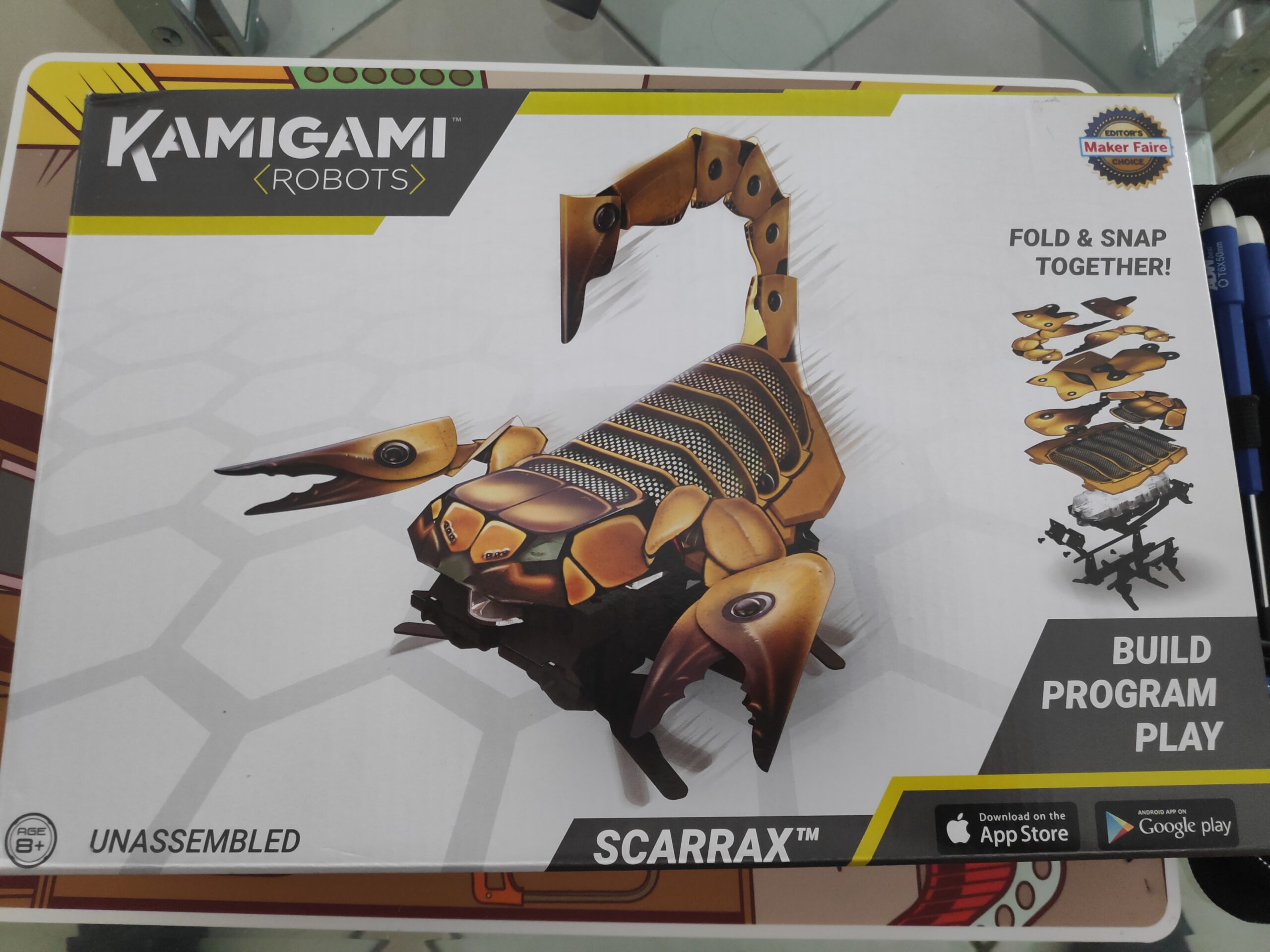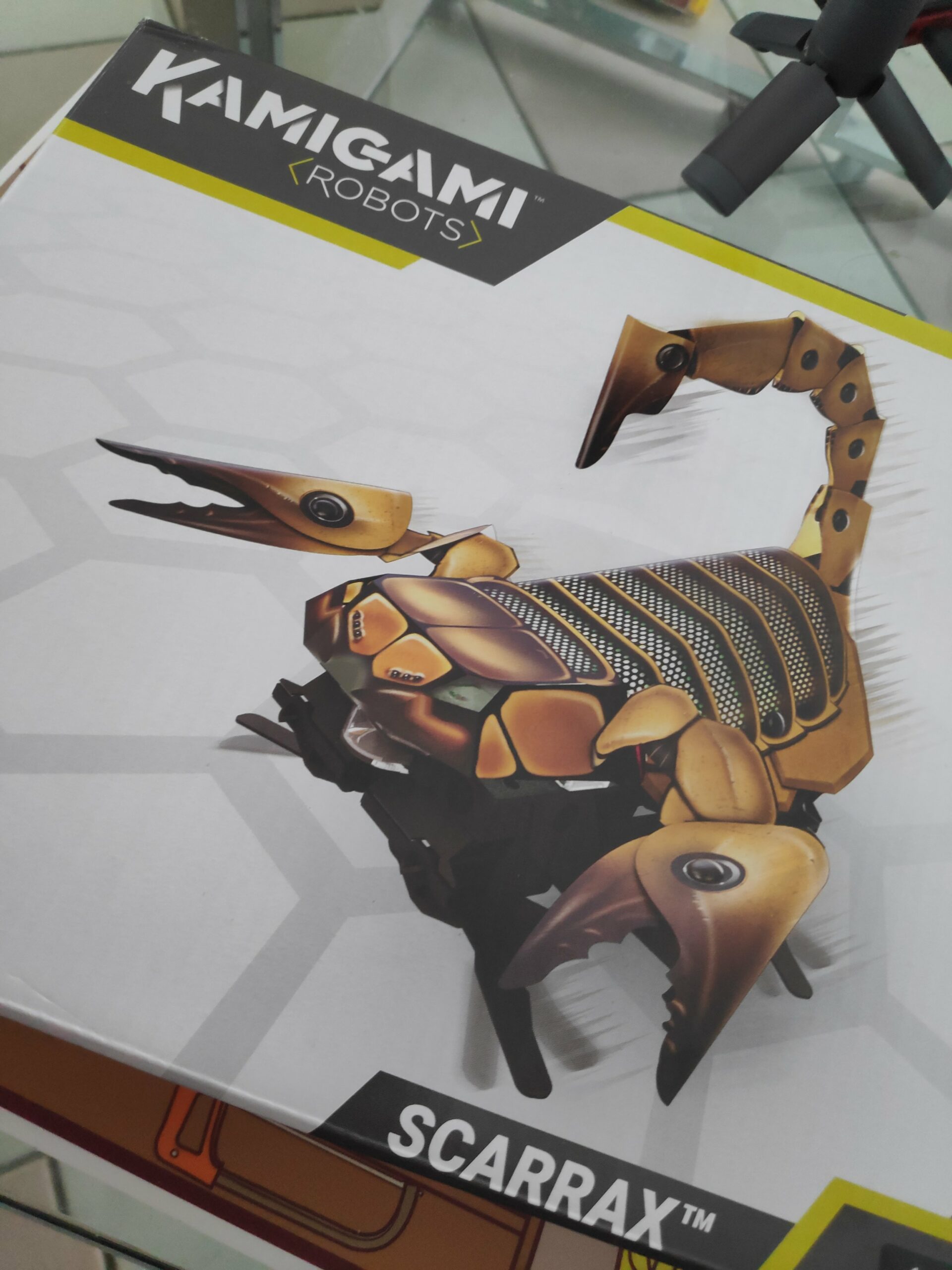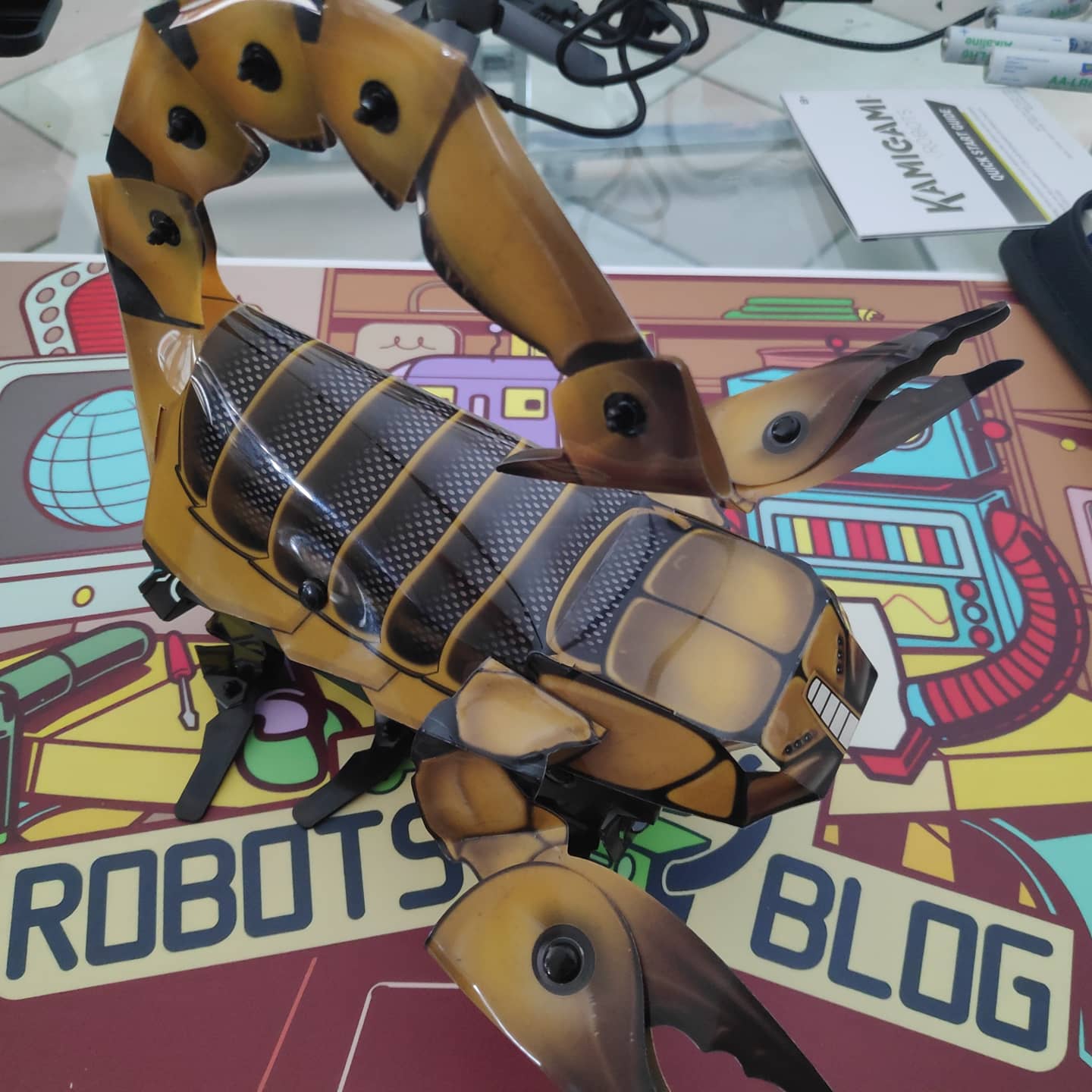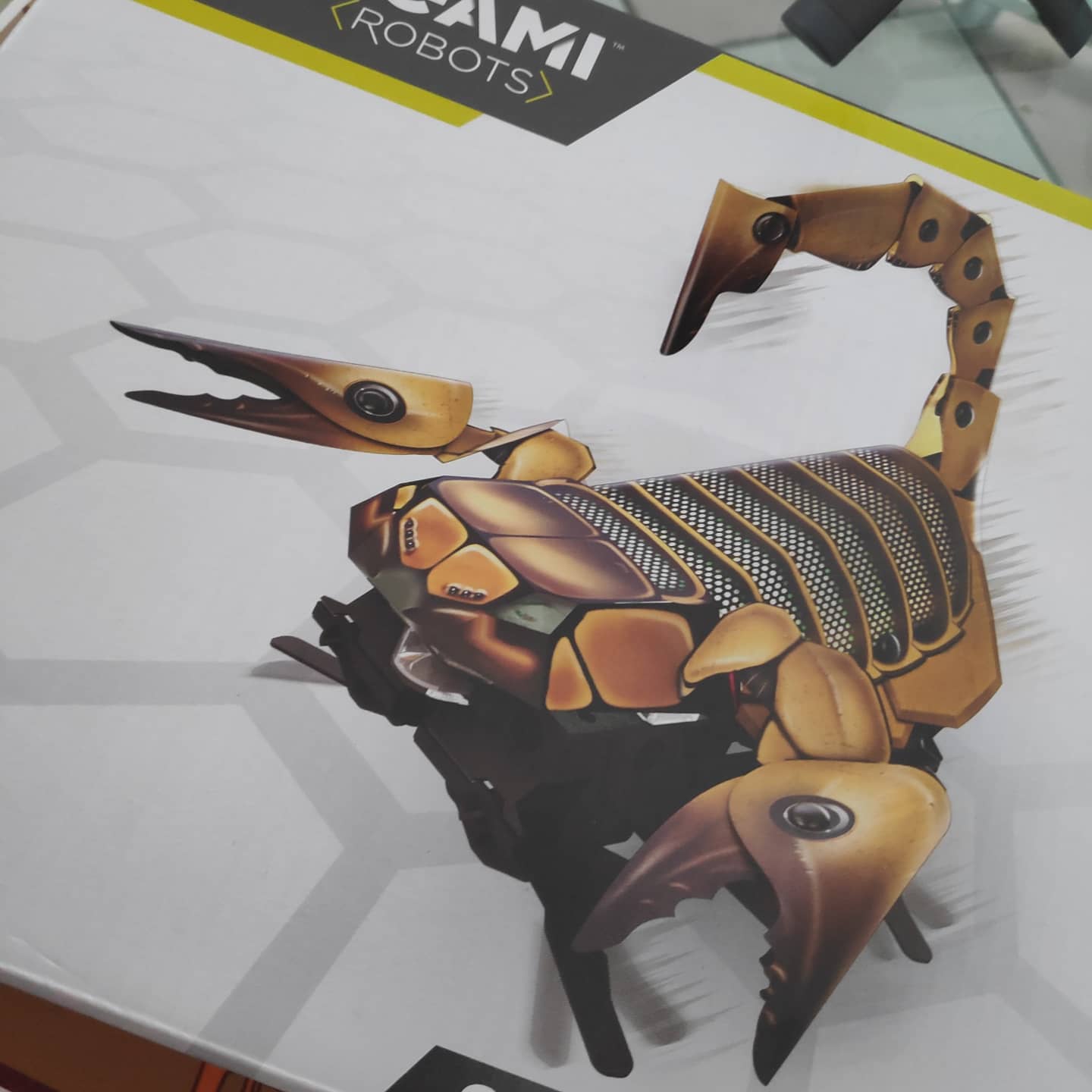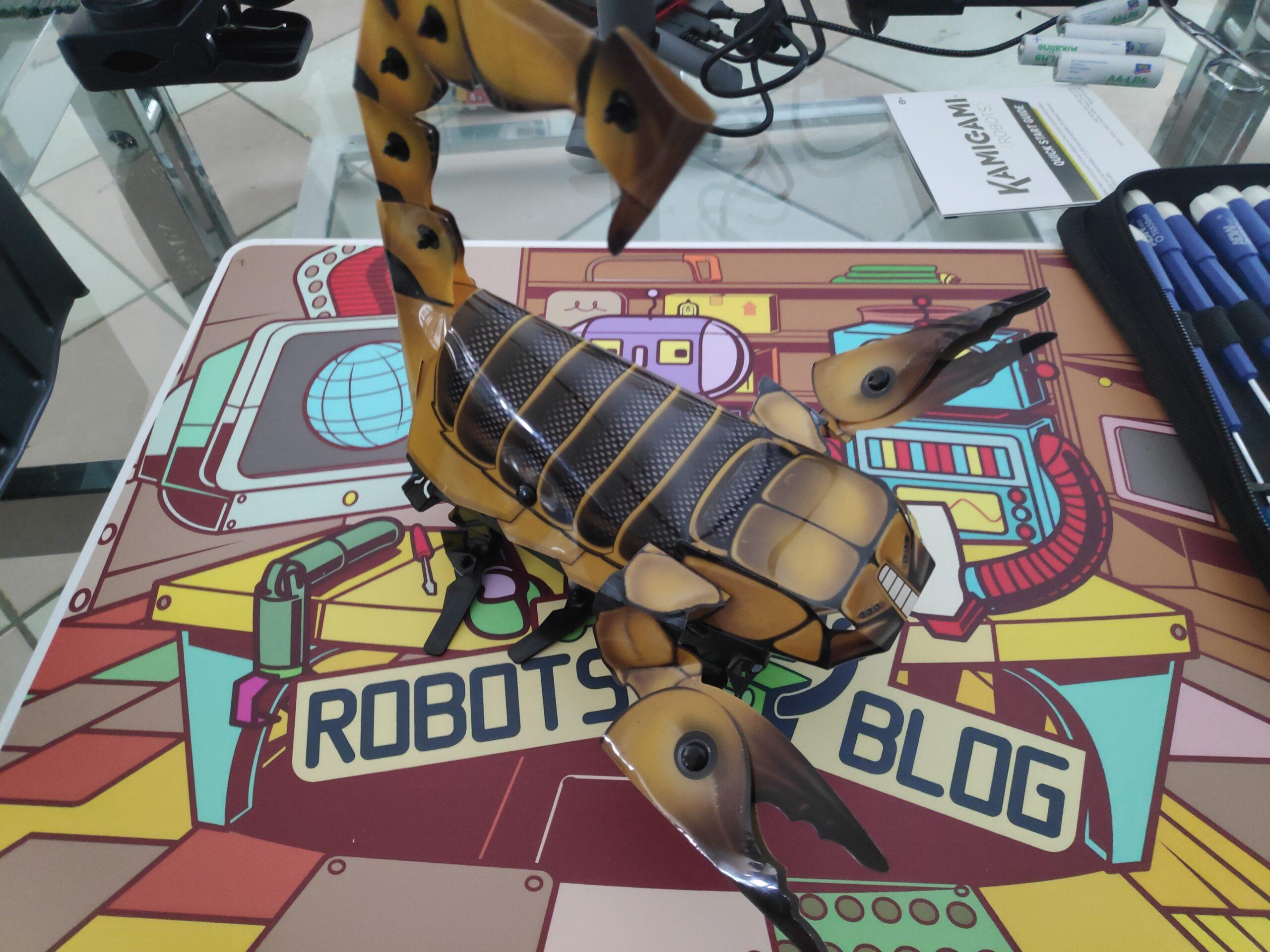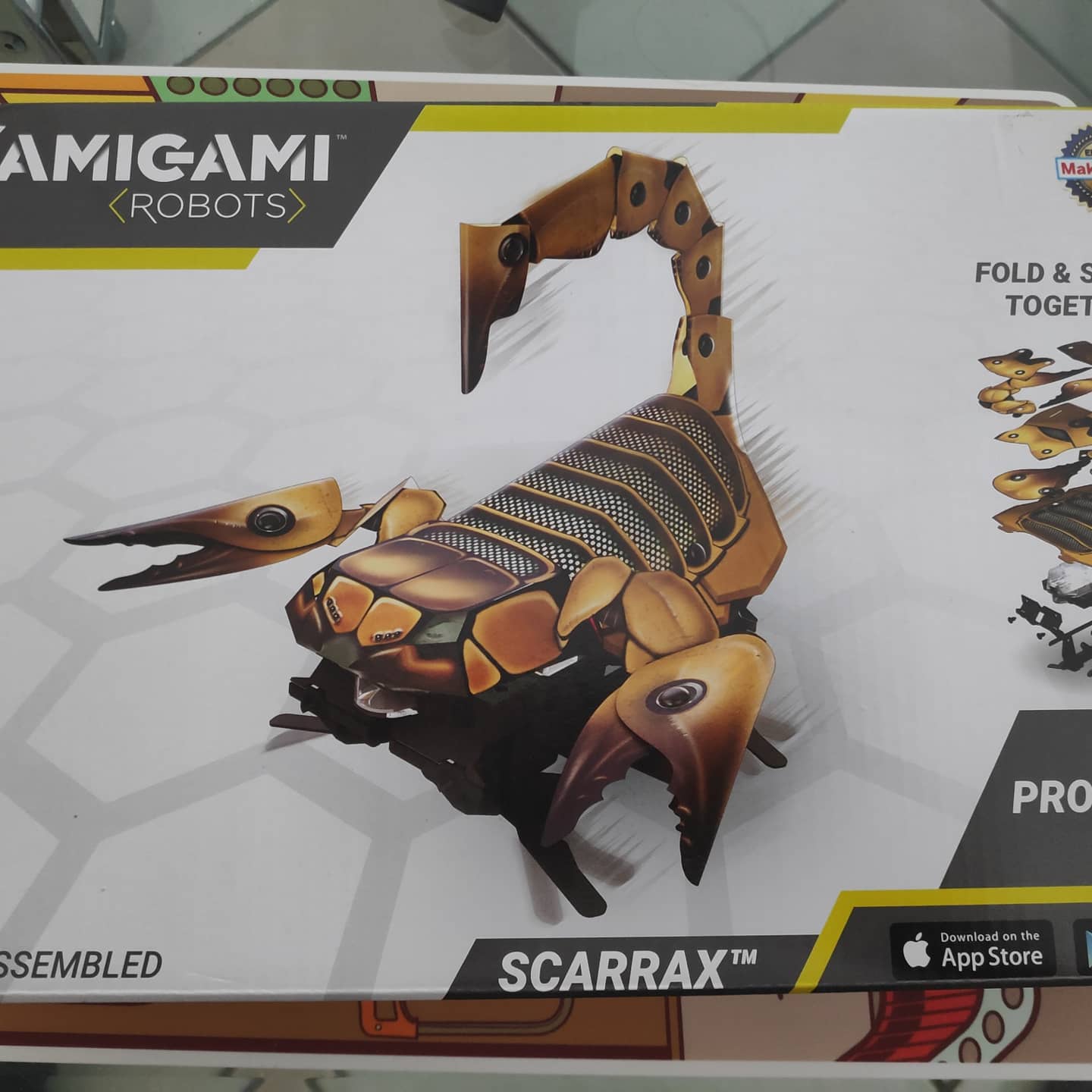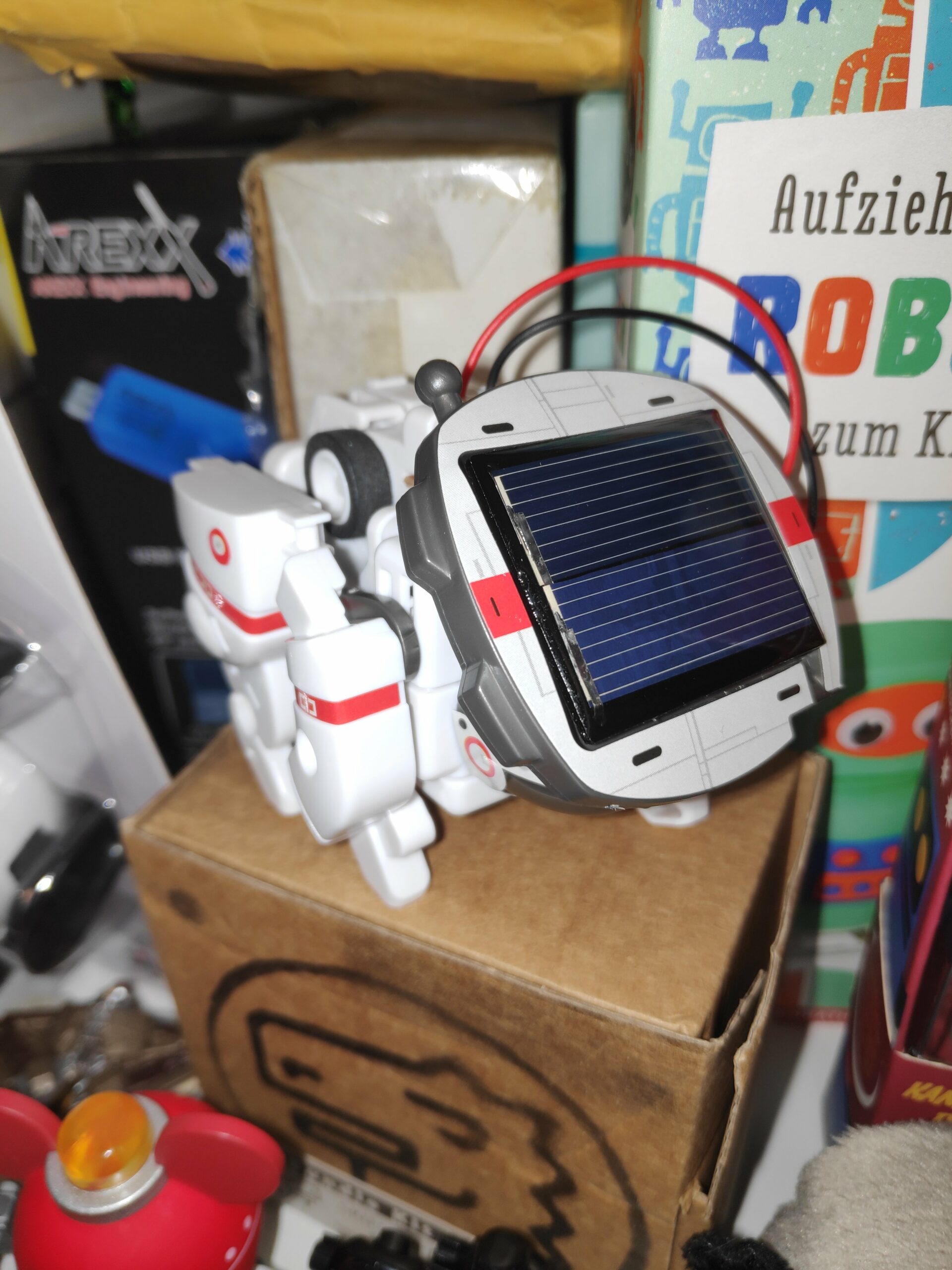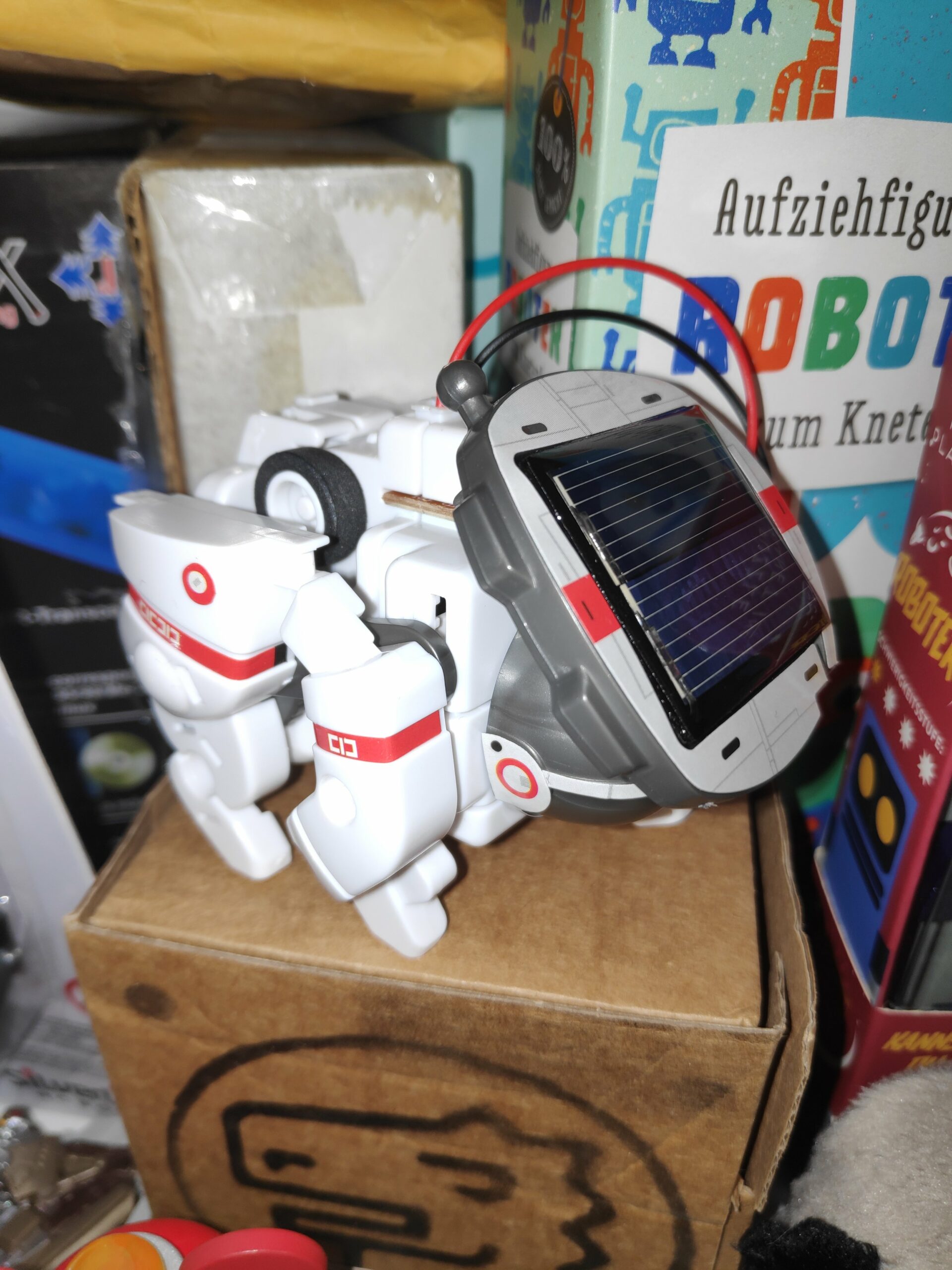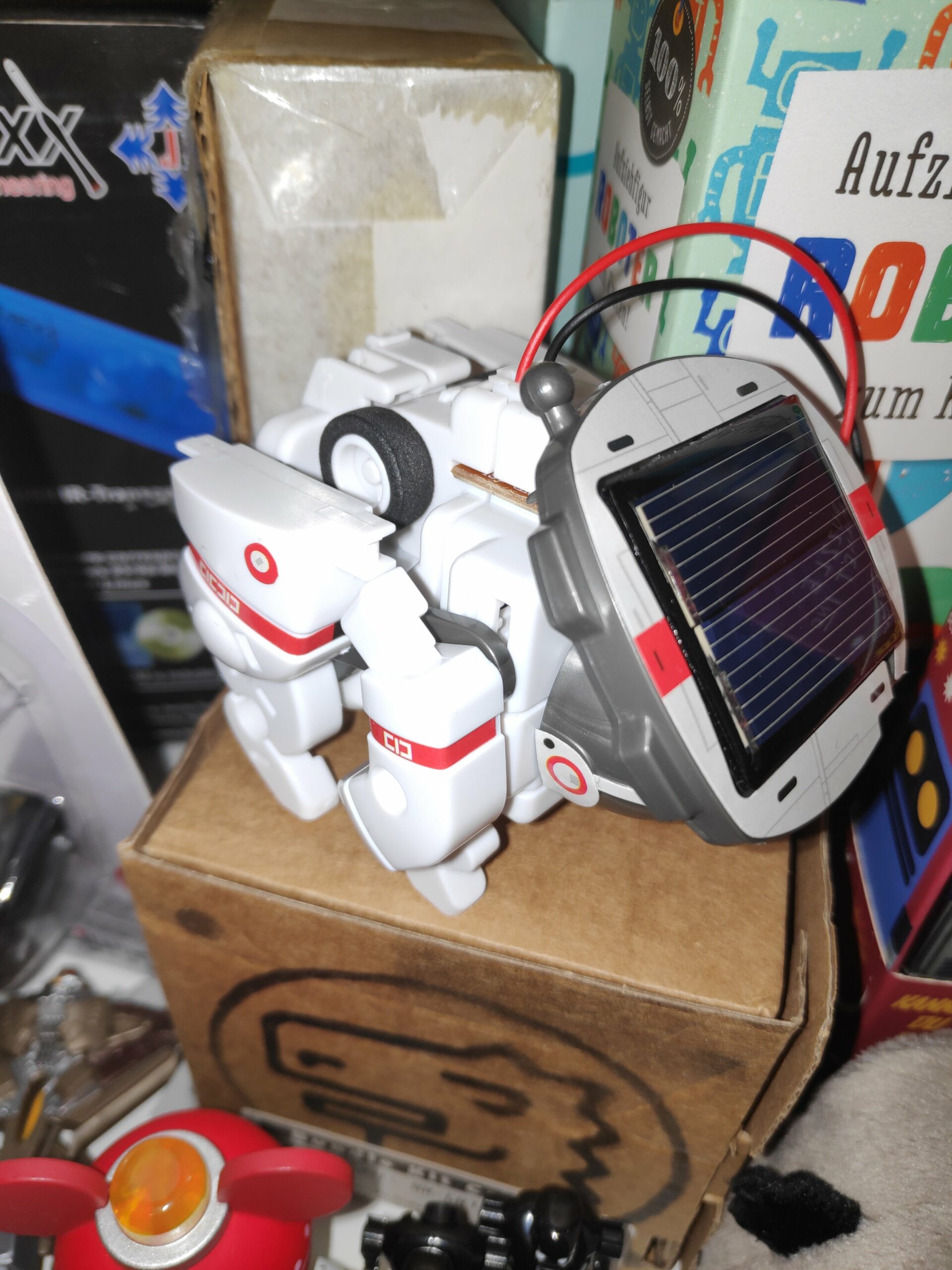Dash Robotics/Mattel Kamigami Robots „Scarrax“. Find the latest News on robots drones AI robotic toys and gadgets at robots-blog.com. Follow us on our Blog Instagram Facebook Twitter or our other sites. Share your robotics ideas and products with us. #robots #robot #omgrobots #roboter #robotic #mycollection #collector #robotsblog #collection #botsofinstagram #bot #robotics #robotik #gadget #gadgets #toy #toys #drone #robotsofinstagram #instabots #photooftheday #picoftheday #followforfollow #instadaily #kamigami #origami #mattel #scorpion #insect #mattel #toyrobot
Schlagwort-Archiv: Robot
Sleepy Robot wants just 5 more minutes
When it’s too early in the morning and your robot refuses to work because it wants to snooze some more…
#igus #robolink #robot #robots #automation #lowcostautomation #snooze #morning #video #fun #sleep #just5moreminutes #tired #wakeup #robotsblog. Find the latest News on robots drones AI robotic toys and gadgets at robots-blog.com. Follow us on our Blog Instagram Facebook Twitter or our other sites. Share your robotics ideas and products with us. #robots #robot #omgrobots #roboter #robotic #mycollection #collector #robotsblog #collection #botsofinstagram #bot #robotics #robotik #gadget #gadgets
Captain Roam-E-O Mars Rover Robot Timelapse Build
Anpro 6in1 Solar Robot
CaDA Bobby Robot C52018W Timelapse Build
BeBot, the beach cleaning robot, is the first in the Searial Cleaners product line
If you need a beach cleaner, just ask for BeBot from The Searial Cleaners range. This robot cleans beaches to meet an essential environmental need and drastically simplifies the daily chore. Poralu Marine has developed a product that is perfectly adapted to its clients’ business concerns.
Not only does BeBot help protect the environment, but it does so without polluting: it is the only fully electric beach cleaner on the market, using both batteries and solar panels. It therefore emits no greenhouse gases.
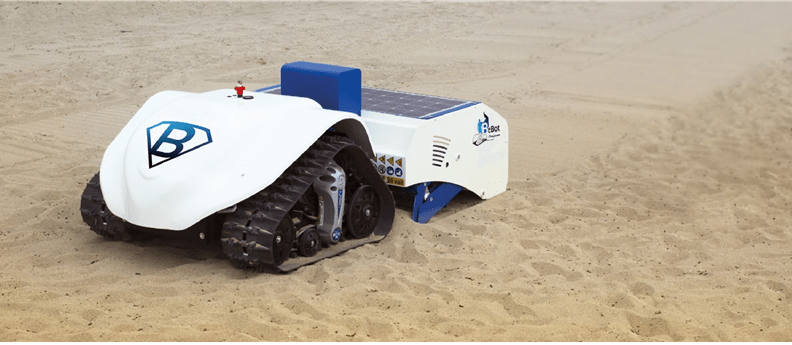
Thanks to its technology, widely acclaimed by the scientific community, it protects fauna buried under the sand, notably turtle eggs. It helps prevent beach erosion and does not weaken beach subsoils.
To fine clean the sand, the cleaner robot is steered by remote control, which helps protect both the user and the environment. This silent multi-purpose robot can pull loads of up to 1000 kg or be fitted with a trailer to transport parasols, deckchairs, and so on. Both easy to use and autonomous, the robot greatly facilitates the work of its users.
BeBot is very quiet and can move around cleaning all day on the beach without disturbing tourists, boaters and people working on the beach.
As part of a framework agreement with the Italian company Niteko, Poralu Marine manufactures, markets and distributes this product throughout the world via a well-established network of partners on every continent.
Enabot introduces EBO SE and EBO AIR, the next generation of social companion robots
The EBO SE and EBO AIR redefine the way people across the world interact, communicate and connect with one another
May 6th, 2021 – Enabot has officially launched on Kickstarter their brand-new social companion robots: the EBO SE and the EBO AIR. Starting today, both models are available for pre-order.
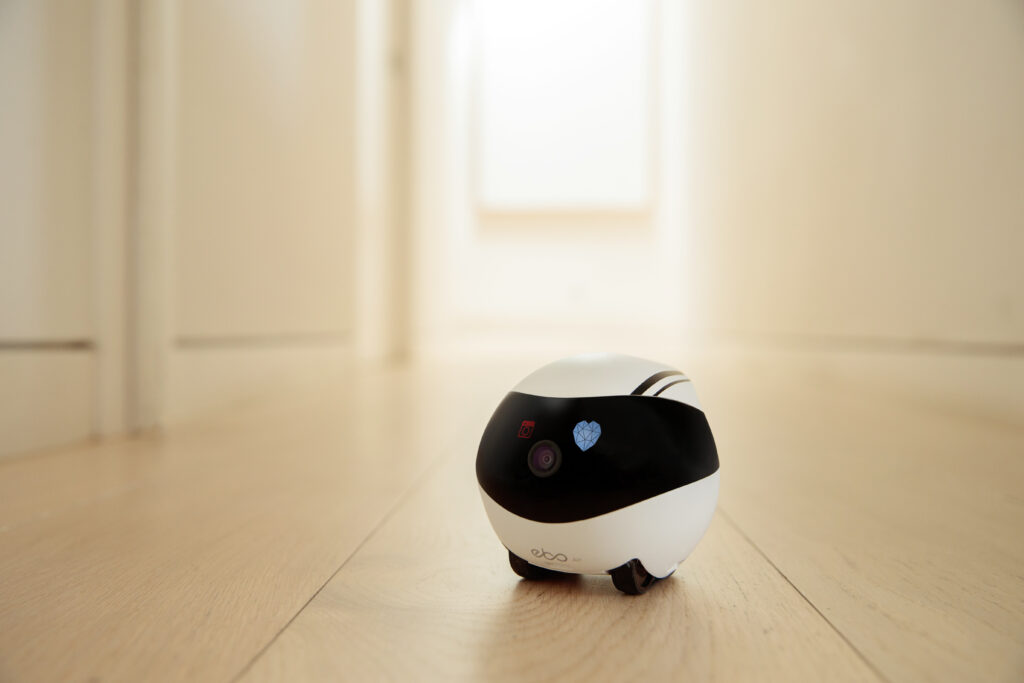
Building on the success of the original EBO S and EBO PRO, described by Mashable as “a smart robot [that] could become your cat’s new BFF” and by GearBrain as “one of the best robots to buy for your home in 2020”, the EBO SE and the EBO AIR are social companion robots, designed to keep your home safe, your pets entertained and your family connected at all times.
Originally created to solve the issue of pet obesity and pet neglect, the EBO evolved to be much more. The EBO SE and AIR represent the next evolutionary step for the home robotic companion. They provide comfort, protection, and companionship for everyone in the family, no matter the distance.
Responding to consumer feedback, Enabot has introduced a number of improvements and added exciting new features. The new EBO allows for multiple users to log in and control the robot. It also comes with night vision, so users can access the camera day and night. The EBO app’s new interface is more user-friendly, and the new wheels, combined with a powerful motor, ensure a smooth ride on all surfaces, including rugs and carpets.
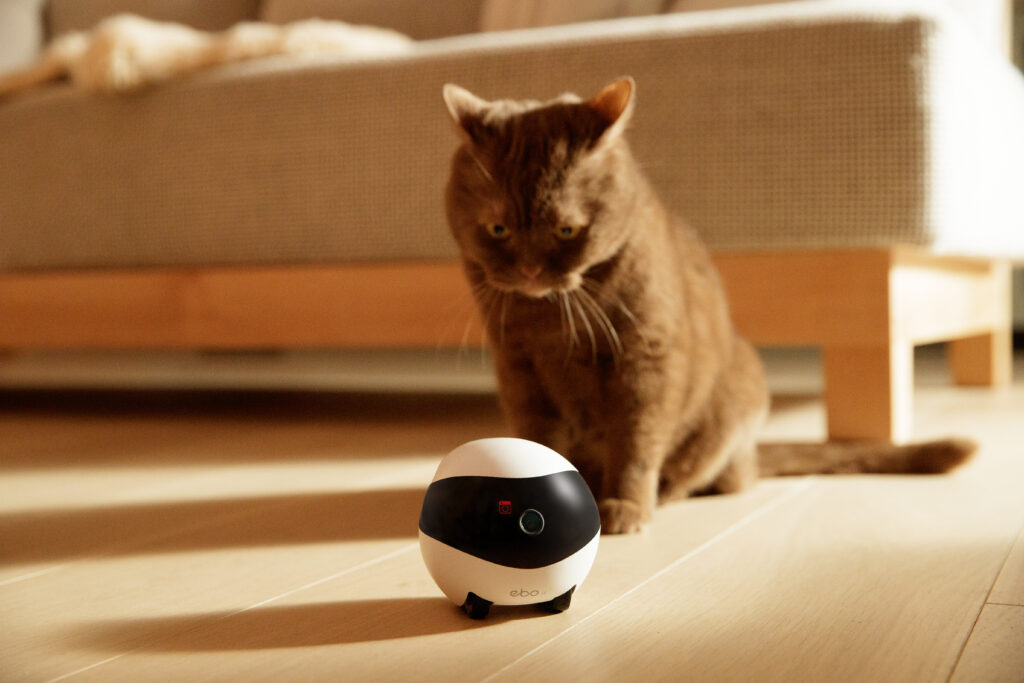
Equipped with a 1080p HD camera and a pair of speakers and microphone, the rolling bots allow for real-life two-way communication using a Wi-Fi connection. Through EBO’s mobile app, parents can remotely interact with their kids and pets, and family members can connect with elderly loved ones from anywhere in the world.
The EBO SE and AIR use a combination of movement, sound, and digital eye animations for life-like interactions. The steady and nimble moving robots can wheel, roll and dance to entertain pets and people alike while capturing photos and videos of every special moment. All the data is stored locally, using an expandable SD card.
Surveillance features on both models include 24-hour video recording, infrared night vision, and motion detection notification, which means the EBO will immediately send you an alert whenever suspicious activities are detected.
With exclusive AI technology, the EBO AIR is able to identify your family and pets, automatically record, track and follow them, allowing for fun interactions throughout the day. Additional AI features include the anti-drop function, pet auto-play mode, and automatic video editing.
Take a look at the EBO SE and EBO AIR Product Intro and see what role they can play in your family.
The EBO SE (priced at $ 99 / € 99 / £ 99) and the EBO AIR (priced at $ 169 / € 169 /£ 159) are now available to pre-order for up to 40% off from:
https://www.kickstarter.com/projects/enabot/ebo-your-smart-and-interactive-family-companion-robot
flatcat, der gruseligste Roboter aller Zeiten, ist nur noch sieben Tage auf Kickstarter
Entweder haben Sie schon eins, oder Sie haben bald eins. Roboterhaustiere erobern die Verbrauchermärkte weltweit in Form von Babyrobben, Hundewelpen oder einem schwanzwedelnden Kissen. Jetzt bekommen sie Gesellschaft von einer überfahrenen Katze.
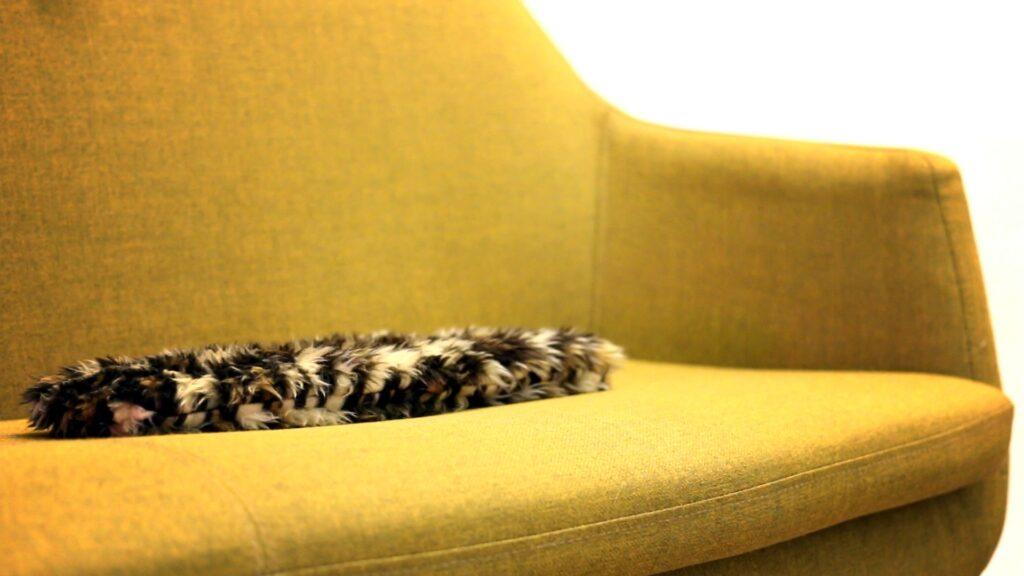
(lifePR) (Berlin, 14.05.21) flatcat wurde von Gizmodo ((https://gizmodo.com/…)) als “der gruseligste Roboter, den man je gesehen hat” betitelt, und das mag für einige tatsächlich so sein. Für viele andere ist es ein zugegebenermaßen seltsames, aber niedliches Roboter-Haustier, das sie umarmen und mit dem sie spielen wollen.
Die ersten paar Flatcats sind ab sofort und nur noch sieben Tage lang auf Kickstarter ((https://www.kickstarter.com/…), der beliebtesten Crowdfunding-Website, erhältlich. Die Kampagne steht kurz vor der Vollfinanzierung, braucht aber noch ein paar entscheidende Zusagen von Roboter-Enthusiasten aus nah und fern, die etwas bewegen wollen.
Der Roboter, der von Jetpack Cognition Lab , einem in Berlin ansässigen Unternehmen mit Grazer Wurzeln entwickelt und hergestellt wird, ist ein Roboter der neuen Art. Er ist völlig anders als alle anderen vergleichbaren Produkte auf dem Markt. Was ihn einzigartig macht, ist seine sensomotorische Kompetenz, die Kräfte seiner eigenen Bewegung und die von außen durch Menschen oder einfach durch die Schwerkraft erzeugten Kräfte zu spüren und darauf zu reagieren.
Die Fähigkeit, Kräfte direkt in den Gelenken zu spüren, erlaubt es Flatcat, neugierig zu sein und seinen eigenen Körper und die Welt auf die sicherste Art und Weise zu erkunden. Die Technologie dafür kommt aus dem Forschungsfeld der Entwicklungsrobotik, bei dem Teile der Entwicklung von Tieren und Menschen in Software und Algorithmen umgesetzt werden.
Mögliche Verwendungszwecke von flatcat sind als Haustier im Wohnzimmer, um einfach zu spielen und gemeinsam die Welt der sensomotorischen Erfahrung und Bewegung zu erkunden; als therapeutischer Roboter, um sanft einfache Bewegungen zu stimulieren, Gesellschaft und Trost zu spenden; oder als Desktop-Forschungs-Roboter für Wissenschaftler und Hacker:innen gleichermaßen, da er neben seiner hochmodernen sensomotorischen Sensibilität auch Open Source, erweiterbar und modifizierbar ist.
Jetpack Cognition Lab, Inc
Seit seinen Anfängen im Jahr 2019 bringt Jetpack Cognition Lab radikale Innovationen aus der wissenschaftlichen Forschung auf den Konsumentenmarkt. Die Gründer des Labs sind Dr. Oswald Berthold und Matthias Kubisch. Sie lernten sich während ihres Studiums an der Humboldt-Universität zu Berlin kennen und taten sich zusammen, um die schrägsten und lustigsten Roboter der Welt zu entwickeln.
Berthold ist ein in österreichischer Künstler-Technologe, geboren in Graz, der schon mit dem Kollektiv farmersmanual Musikgeschichte geschrieben hat, indem er neuartige Stile und innovative Ansätze zur digitalen Musikproduktion und -veröffentlichung im Internetzeitalter einführte. Spätestens seit er 2018 seine Promotion in Robotik innerhalb der Adaptive Systems Group der HU Berlin abgeschlossen hat, ist er damit beschäftigt, Grundlagenforschung in Kundennutzen zu verwandeln.
Kubisch ist ein deutscher Informatiker, Kreativer und Aktivist. Er hat als wesentliches Mitglied des Teams gearbeitet, das den modularen humanoiden Roboter Myon im ALEAR-Projekt unter der Leitung von Dr. Manfred Hild entwickelt hat. Außerdem hat er die Industrie von innen gesehen und Algorithmen zur Steuerung von elektrischen Kraftwerken entwickelt. Er ist nicht nur ein Experte für adaptive Echtzeitalgorithmen und maschinelles Lernen, sondern auch ein genialer Elektronikdesigner und Produktvisionär.
GinoBot, Inspiring Inventors of the Future with STEM Disciplines, Launches on Kickstarter
The all-in-one smart toy incorporates science, technology, engineering and mathematics disciplines with playtime, in a hands-on way.
Astoria, New York – (May 3, 2021) Keeping children entertained and engaged in today’s tech-driven world is now easier with GinoBot. The tool that implements a fun, hands-on experiencewith unlimited expansion potential for learning STEM disciplines, computational thinking, and digital literacy is launching on Kickstarter today.
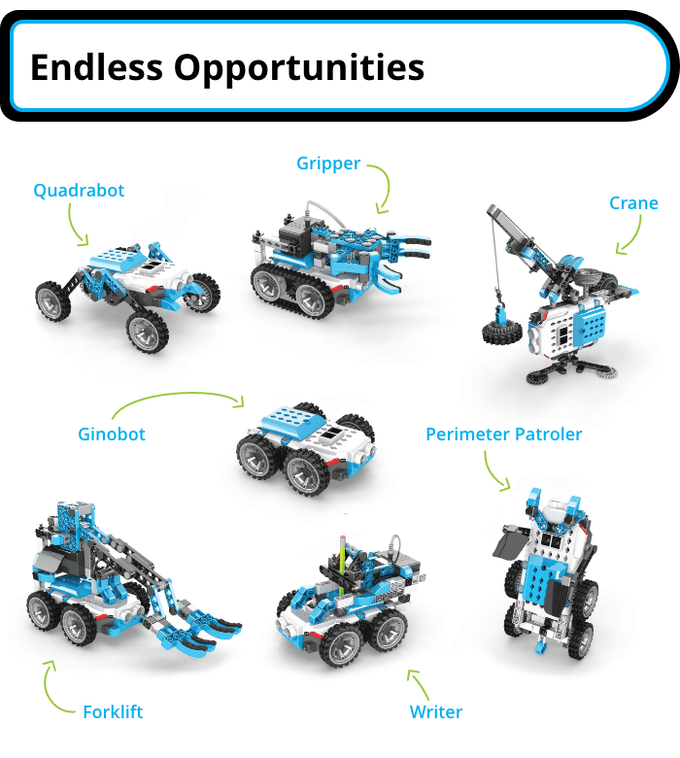
GinoBot seamlessly blends playtime with advanced learning to sharpen a child’s mind for the future. From plug-and-play robot to high-end coding and electronics, the progression of skills with GinoBot is unlimited. Children ages 6+ can build simple or complex models with GinoBot’s scalable, and compatible design.
It features KEIRO software for block-based programming, which is compatible with a PC (Windows, Linux, MAC OS) and smart devices (Google Play, Apple Store). GinoBot has Bluetooth and WiFi connectivity, as well as a micro USB connector. It can also connect with 3rd party hardware like Arduino, Microbit and Raspberry Pi, among others.
Science, technology, engineering and math, or STEM toys are the future. GinoBot is a solution for children to learn 21st century skills that lets them playfully learn how to code, design, build, and rebuild models quickly, no matter their age or learning style.
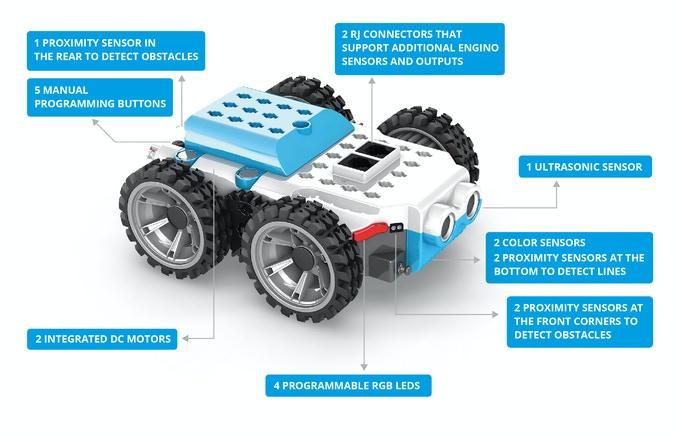
“Children are our future and we believe they are all gifted with the power to perform astonishing technological feats,” said Costas Sisamos, founder and CEO of Engino. “As STEM learning principles become more prominent in our children’s curriculum, GinoBot is a great learning tool that will keep young minds hungry to explore, design and create enabling them to experience the limitless thrill of scientific discovery.”
GinoBot is a great way to invest in your child’s imagination and expand their creativity. To pre-order, visit pr.go2.fund/ginobot.
About Engino
Engino is a toy manufacturer that specializes in construction toys and smart educational toys, and have been at the vanguard of the STEM education movement for the past 15 years. A few years ago, Engino joined the robotics market and started developing programmable robots. These robots are supported with an extensive curriculum so children can learn the digital-side of thinking and how to do programming, coding, and more. For more information, visit https://www.engino.com/.
Rotrics DexArm Installation und erste Zeichnung
In diesem Video seht ihr, nur leicht beschleunigt, wie schnell sich der Rotrics DexArm Roboterarm anschließen, einrichten und in Betrieb nehmen lässt. Für einen ersten Test, lasse ich den Roboterarm mein RobotsBlog Logo zeichnen.
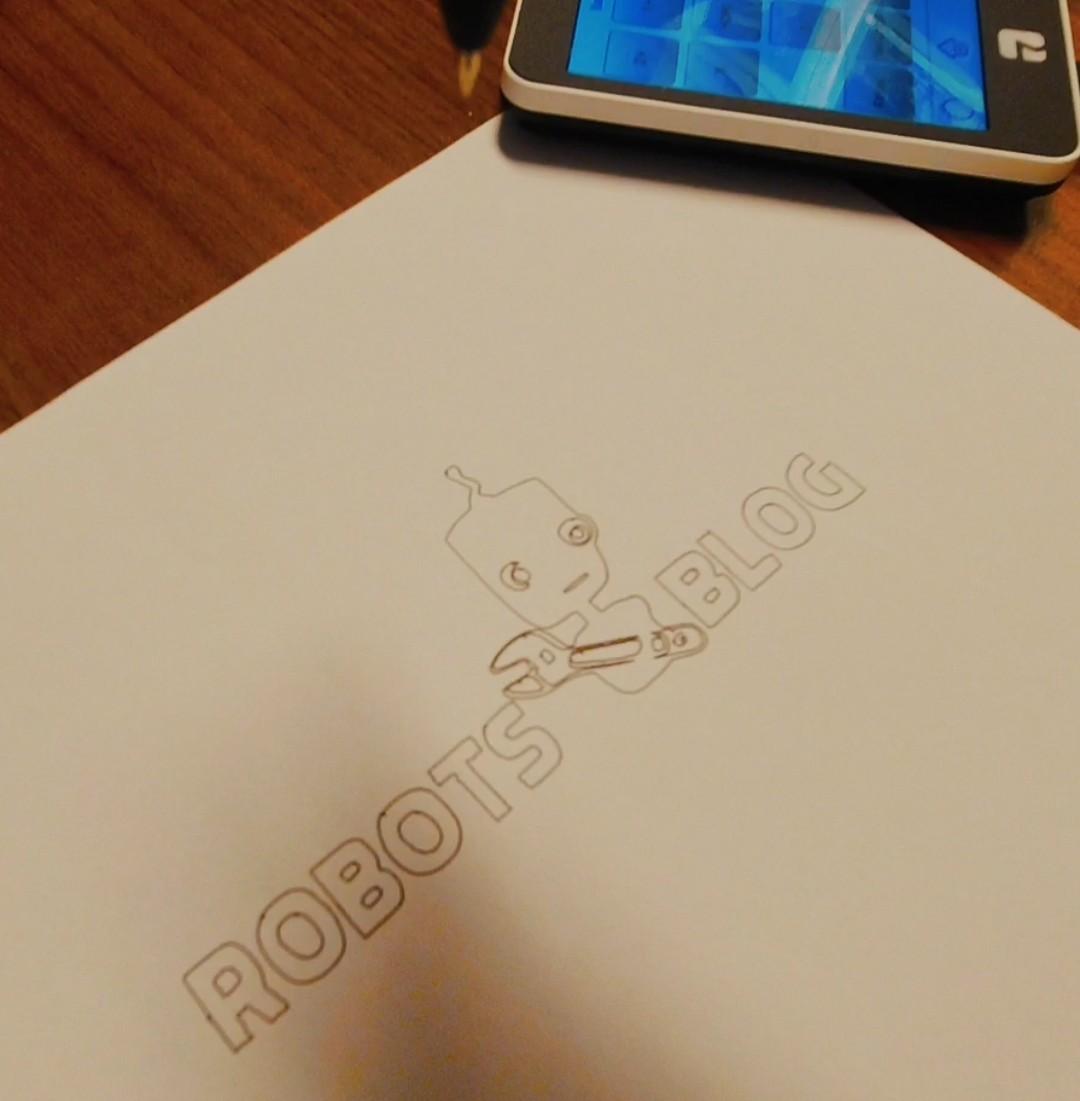
Zuvor habe ich die neueste Firmware und Software installiert, sowie mich mit dem TouchPanel auseinandergesetzt und dessen Funktion getestet. Rechnet man diese Zeit heraus, so dauert es vom Auspacken bis zur erstens Verwendung des Roboterarms höchstens fünf Minuten.
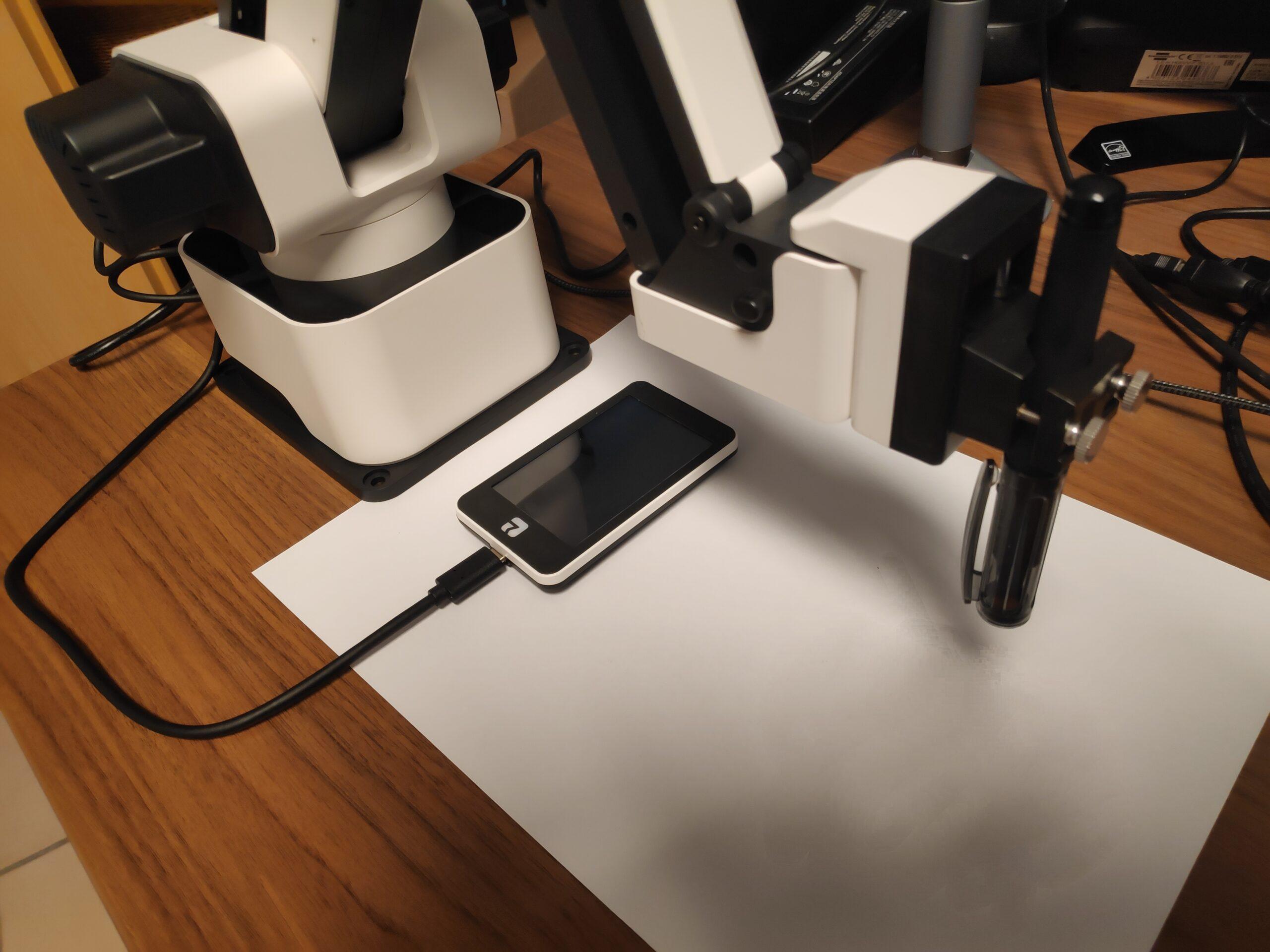
Verzichtet man auf die Anbindung an den Computer oder das Verwenden eines eigenen Logos zu Testzwecken, kann der Roboterarm komplett über das Touchpanel eingerichtet und direkt ausprobiert werden. So könnte man sogar noch schneller mit dem Rotrics DexArm starten und benötigt noch nicht einmal einen Computer.
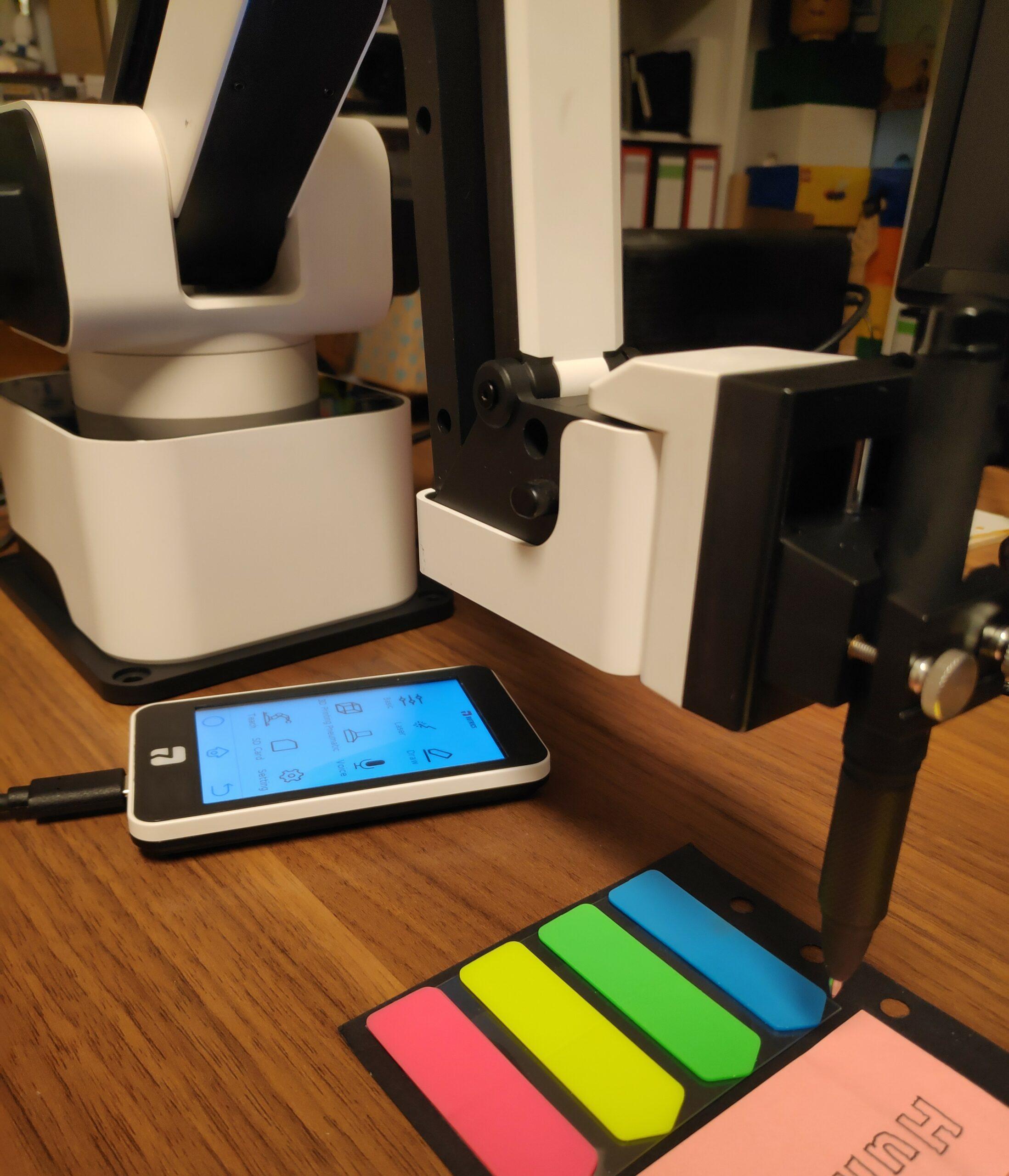
Insgesamt ist die Bedienung sehr einfach und die Software führt einen am Computer durch alle notwendigen Schritte. Hier sind keinerlei Vorkenntnisse erforderlich. Das Schreiben von Text oder Zeichnen von Grafiken mit dem Roboterarm könnte wirklich nicht einfacher sein.
